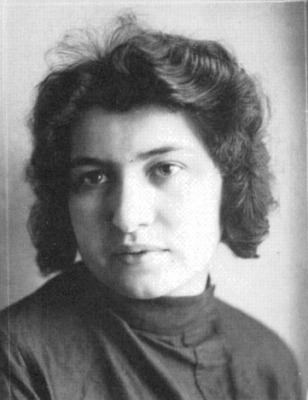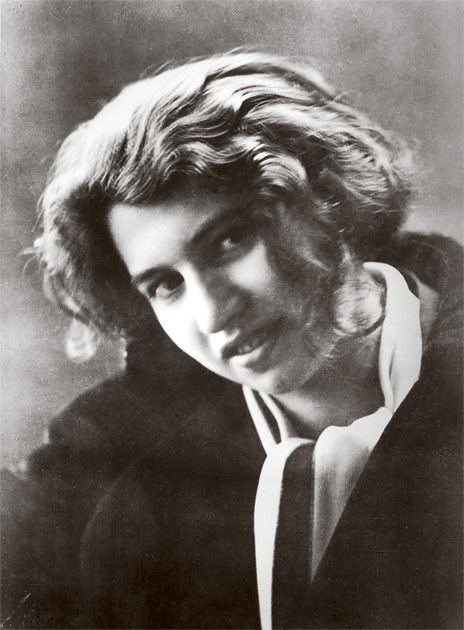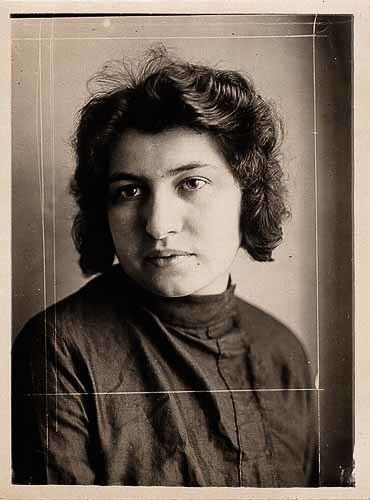Other names Dora Dymant Name Dora Diamant Occupation Teacher, actress | Citizenship Polish Ethnicity Jewish | |
 | ||
Died August 15, 1952, London, United Kingdom Similar Felice Bauer, Milena Jesenská, Franz Kafka | ||
Dora Diamant (Dwojra Diament, also Dymant) (March 4, 1898 – August 15, 1952) is best remembered as the lover of the writer Franz Kafka and the person who kept some of his last writings in her possession until they were confiscated by the Gestapo in 1933. This retention was against the wishes of Kafka, who had requested shortly before his death that they be destroyed.

Biography

Diamant was born in Pabianice, Poland on March 4, 1898, the daughter of Herschel Dymant, a successful small businessman and a devout follower of the Hasidic dynasty in Ger. After her mother's death around 1912, the family relocated to Będzin, near the German border. At the end of World War I, after helping to raise her ten siblings, Dora refused to marry and was sent to Kraków to study to be a kindergarten teacher. She ran away and went to Berlin, where she worked in the Berlin Jewish community as a teacher and seamstress in an orphanage (and changed the spelling of her name to Diamant).

In July 1923, she was a volunteer for the Berlin Jewish Peoples Homes Vacation Camp at Graal-Müritz on the Baltic Sea, when she met Franz Kafka, who was 40 years old and suffering from tuberculosis. It was love at first sight and they spent every day of the next three weeks together, making plans to live together in Berlin. In September, after returning briefly to Prague, Kafka moved to Berlin, where he and Dora shared three different flats before his tuberculosis required hospitalization. Dora stayed with him, moving even to the sanatorium outside Vienna where he died in her arms on June 3, 1924.
After Kafka's death, Diamant was blamed for burning Kafka's papers under his gaze and at his request during his last months of life, as well as for her decision to retain some of his journals and thirty-six of his letters to her. Despite Max Brod's request that she turn over to him all the Kafka papers in her possession, Diamant kept letters Kafka had written to her. Max Brod, along with others in possession of letters and related materials also chose not to comply with Kafka's final requests that all his writing be destroyed. Diamant also secretly kept an unknown number of Kafka's notebooks, which remained in her possession until they were stolen from her apartment, along with her other papers, in a 1933 Gestapo raid. It is not known which notebooks ended in Diamant's possession and which had already been passed on to Brod during Kafka's last illness. Searches for these missing papers have been conducted by Max Brod and German Kafka scholar Klaus Wagenbach in the 1950s, and since the 1990s by the Kafka Project, based at San Diego State University in California.
In the late 1920s Dora studied theatre at the Dumont Drama Academy in Düsseldorf and worked as a professional actress. In the 1930s Dora joined the Communist Party of Germany as an agitprop actress and married Lutz Lask, editor of Die Rote Fahne, the Communist party newspaper. She gave birth to a daughter, Franziska Marianne Lask, on March 1, 1934.
Dora escaped Germany with her daughter in 1936, joining her husband in Soviet Russia. After Lask was arrested and sent to the Far East during Joseph Stalin's purges in 1937, Dora left the Soviet Union, traveling across Europe, reaching safety in England one week before the Nazis invaded Poland in 1939.
Dora and her daughter were interned as enemy aliens at the Port Erin Women's Detention Camp on the Isle of Man in 1940-1941. Released, she returned to London, where she helped to found the Friends of Yiddish, working to keep the Yiddish language and culture alive. In 1950 she finally realized her lifelong dream and visited the new state of Israel. She died of kidney failure at Plaistow Hospital in east London on August 15, 1952, and was buried in an unmarked grave in the United Synagogue Cemetery on Marlowe Road in East Ham. In 1999, her living relatives from Israel and Germany gathered at her gravesite for a stonesetting. Her headstone reads "Who knows Dora, knows what love means".
